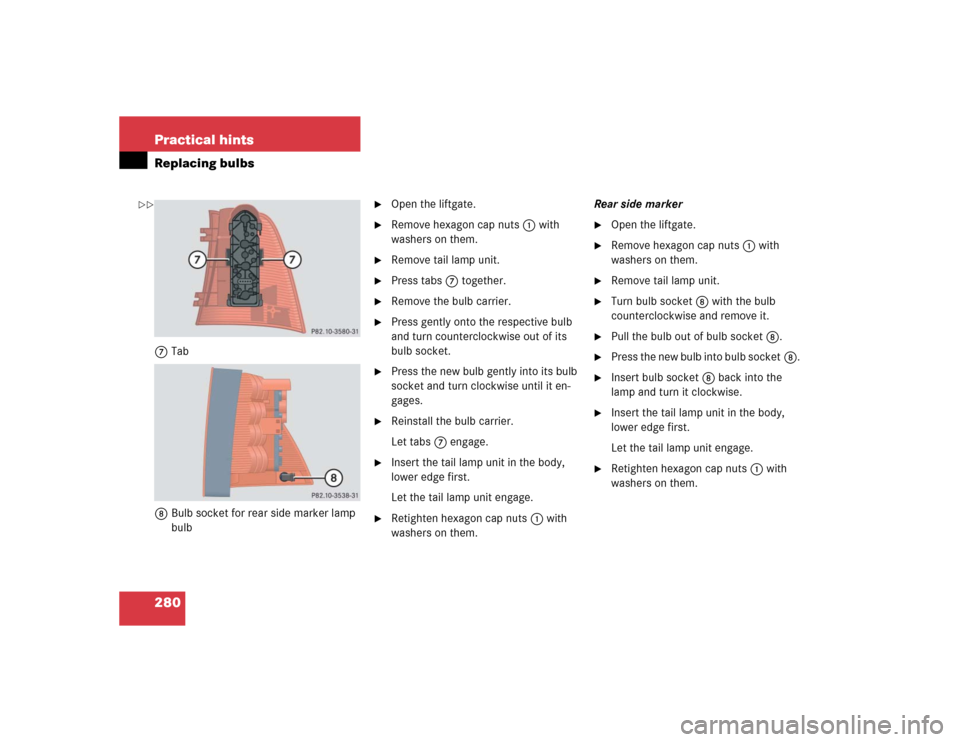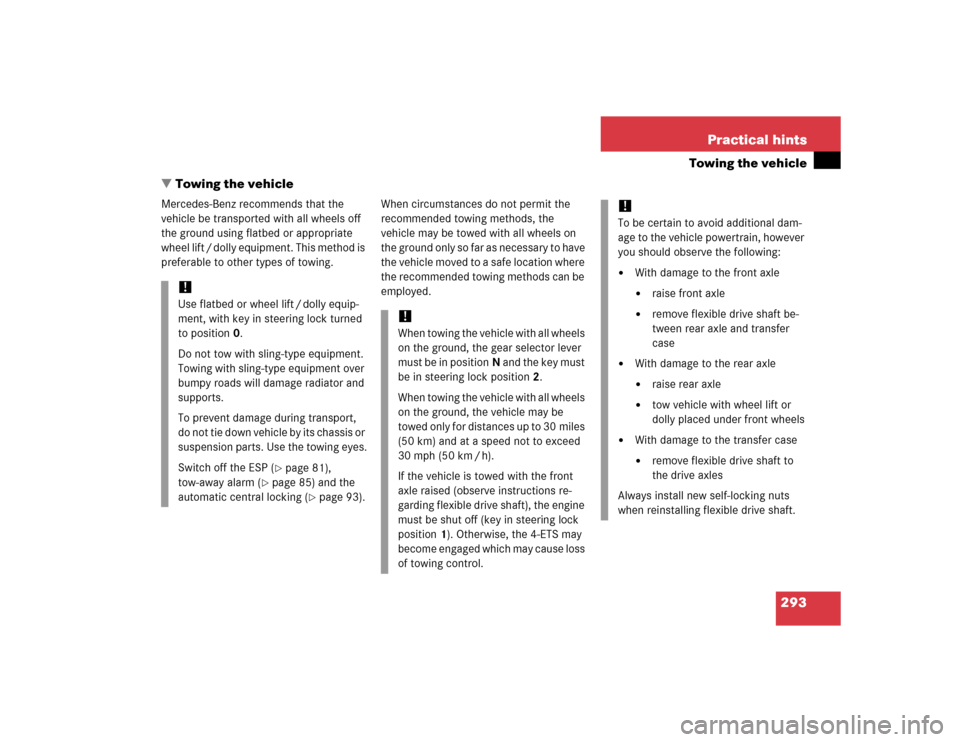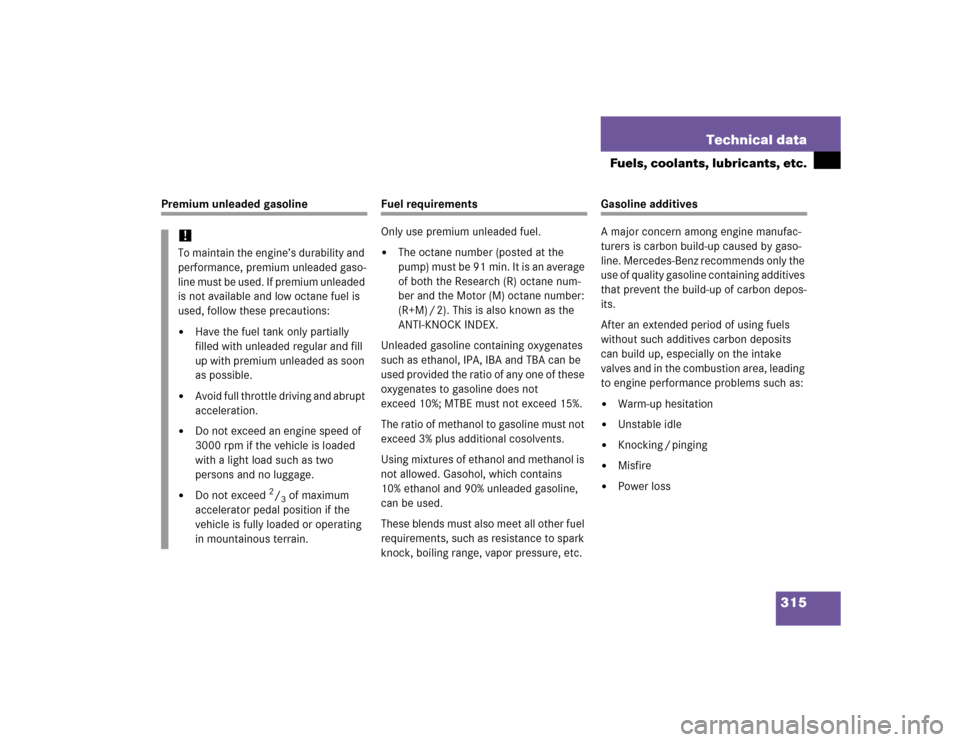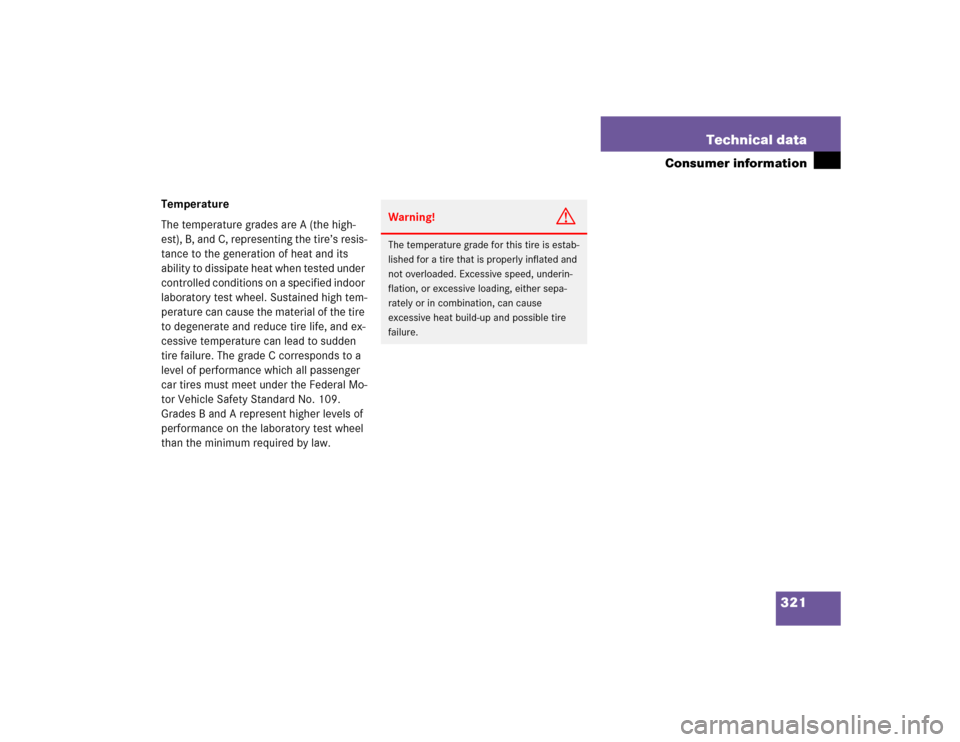Page 282 of 356

280 Practical hintsReplacing bulbs7Tab
8Bulb socket for rear side marker lamp
bulb
�
Open the liftgate.
�
Remove hexagon cap nuts1 with
washers on them.
�
Remove tail lamp unit.
�
Press tabs7 together.
�
Remove the bulb carrier.
�
Press gently onto the respective bulb
and turn counterclockwise out of its
bulb socket.
�
Press the new bulb gently into its bulb
socket and turn clockwise until it en-
gages.
�
Reinstall the bulb carrier.
Let tabs7 engage.
�
Insert the tail lamp unit in the body,
lower edge first.
Let the tail lamp unit engage.
�
Retighten hexagon cap nuts1 with
washers on them.Rear side marker
�
Open the liftgate.
�
Remove hexagon cap nuts1 with
washers on them.
�
Remove tail lamp unit.
�
Turn bulb socket8 with the bulb
counterclockwise and remove it.
�
Pull the bulb out of bulb socket8.
�
Press the new bulb into bulb socket8.
�
Insert bulb socket8 back into the
lamp and turn it clockwise.
�
Insert the tail lamp unit in the body,
lower edge first.
Let the tail lamp unit engage.
�
Retighten hexagon cap nuts1 with
washers on them.
��
Page 292 of 356
290 Practical hintsBattery
Batteries contain materials that can harm
the environment if disposed of improperly.
Large 12 volt storage batteries contain
lead. Recycling of batteries is the preferred
method of disposal. Many states require
sellers of batteries to accept old batteries
for recycling.
iThe following procedures must be car-
ried out following any interruption of
battery power (e.g. due to reconnec-
tion):�
Set the clock (
�page 119).
�
Set the date in trip computer
(�page 189).
�
Calibrate the compass
(�page 191).
�
Resynchronize the ESP
(�page 252).
�
Resynchronize side power windows
(�page 148).
�
Resynchronize tilt / sliding
sunroof*(
�page 152).
Page 295 of 356

293 Practical hints
Towing the vehicle
�Towing the vehicle
Mercedes-Benz recommends that the
vehicle be transported with all wheels off
the ground using flatbed or appropriate
wheel lift / dolly equipment. This method is
preferable to other types of towing.When circumstances do not permit the
recommended towing methods, the
vehicle may be towed with all wheels on
the ground only so far as necessary to have
the vehicle moved to a safe location where
the recommended towing methods can be
employed.
!Use flatbed or wheel lift / dolly equip-
ment, with key in steering lock turned
to position0.
Do not tow with sling-type equipment.
Towing with sling-type equipment over
bumpy roads will damage radiator and
supports.
To prevent damage during transport,
do not tie down vehicle by its chassis or
suspension parts. Use the towing eyes.
Switch off the ESP (
�page 81),
tow-away alarm (
�page 85) and the
automatic central locking (
�page 93).
!When towing the vehicle with all wheels
on the ground, the gear selector lever
must be in positionN and the key must
be in steering lock position2.
When towing the vehicle with all wheels
on the ground, the vehicle may be
towed only for distances up to 30 miles
(50 km) and at a speed not to exceed
30 mph (50 km / h).
If the vehicle is towed with the front
axle raised (observe instructions re-
garding flexible drive shaft), the engine
must be shut off (key in steering lock
position1). Otherwise, the 4-ETS may
become engaged which may cause loss
of towing control.
!To be certain to avoid additional dam-
age to the vehicle powertrain, however
you should observe the following:�
With damage to the front axle�
raise front axle
�
remove flexible drive shaft be-
tween rear axle and transfer
case
�
With damage to the rear axle�
raise rear axle
�
tow vehicle with wheel lift or
dolly placed under front wheels
�
With damage to the transfer case�
remove flexible drive shaft to
the drive axles
Always install new self-locking nuts
when reinstalling flexible drive shaft.
Page 298 of 356
296 Practical hintsTowing the vehicleVehicles with sport package*1Cover
2Towing eye
To remove cover:�
Grip cover1 at bottom and securely
pull out.
To reinstall cover:
�
Engage cover and press in securely.
Stranded vehicle
Freeing a stranded vehicle, on which the
wheels are dug into sand or mud, should
be done with the greatest of care, especial-
ly if the vehicle is heavily loaded.
Avoid pulling the vehicle jerkily or diago-
nally, since it could result in damage to the
chassis alignment.
Never try to free a vehicle that is still cou-
pled to a trailer.
If possible, a vehicle equipped with trailer
hitch receiver should be pulled backward
in its own previously made tracks.
Page 308 of 356
306 Technical dataEngineModel
ML 350 (163.157
1)
1The quoted data apply only to the standard vehicle. See an authorized Mercedes-Benz Light Truck Center for the corresponding data of all special bodies and special
equipment.
ML 500 (163.175)
1
Engine
112
113
Mode of operation
4-stroke engine, gasoline injection
4-stroke engine, gasoline injection
No. of cylinders
6
8
Bore
3.81 in (97.00 mm)
3.81 in (97.00 mm)
Stroke
3.31 in (84.00 mm)
3.31 in (84.00 mm)
Total piston displacement
227 cu in (3724 cm
3)
303 cu in (4966 cm
3)
Compression ratio
10:1
10:1
Output acc. to SAE J 1349
232 hp / 5750 rpm
2
(173 kW / 5750 rpm)
2Premium fuel required. Performance may vary with fuel octane rating.
288 hp / 5600 rpm
2
(215 kW / 5600 rpm)
Maximum torque acc. to SAE J 1349
254 lb-ft / 3000-4500 rpm
(345 Nm / 3000-4500 rpm)
325 lb-ft / 2700 rpm
(440 Nm / 2700 rpm)
Maximum engine speed
6000 rpm
6000 rpm
Firing order
1-4-3-6-2-5
1-5-4-2-6-3-7-8
Poly-V-belt
2 370 mm
2370 mm
Page 314 of 356
312 Technical dataFuels, coolants, lubricants, etc.Capacities
Vehicle components and their respective
lubricants must match.Therefore only use products tested and
approved by Mercedes-Benz.Please refer to the Factory Approved
Service Products pamphlet, or inquire at
your Mercedes-Benz Light Truck Center.
Model
Capacity
Fuels, coolants, lubricants, etc.
Engine with oil filter
ML 350, ML 500
8.5 US qt (8.0 l)
Approved engine oils
Automatic transmis-
sion
9.0 US qt (8.5 l)
MB Automatic Transmission Oil
Transfer case
1.6 US qt (1.5 l)
(Dexron 3 or Dexron 2E)
Rear axle
1.3 US qt (1.25 l)
(Hypoid gear oil SAE 90, 85 W 90)
Front axle
1.2 US qt (1.1 l)
(Hypoid gear oil SAE 90)
Power steering
approx. 0.65 US qt (0.6 l)
MB Power Steering Fluid
Front wheel hubs
approx. 1.5oz (43g) each
High temperature roller bearing grease
Page 317 of 356

315 Technical data
Fuels, coolants, lubricants, etc.
Premium unleaded gasoline
Fuel requirements
Only use premium unleaded fuel.�
The octane number (posted at the
p um p) m us t be 91 mi n. It i s an a vera ge
of both the Research (R) octane num-
ber and the Motor (M) octane number:
(R+M) / 2). This is also known as the
ANTI-KNOCK INDEX.
Unleaded gasoline containing oxygenates
such as ethanol, IPA, IBA and TBA can be
used provided the ratio of any one of these
oxygenates to gasoline does not
exceed 10%; MTBE must not exceed 15%.
The ratio of methanol to gasoline must not
exceed 3% plus additional cosolvents.
Using mixtures of ethanol and methanol is
not allowed. Gasohol, which contains
10% ethanol and 90% unleaded gasoline,
can be used.
These blends must also meet all other fuel
requirements, such as resistance to spark
knock, boiling range, vapor pressure, etc.
Gasoline additives
A major concern among engine manufac-
turers is carbon build-up caused by gaso-
line. Mercedes-Benz recommends only the
use of quality gasoline containing additives
that prevent the build-up of carbon depos-
its.
After an extended period of using fuels
without such additives carbon deposits
can build up, especially on the intake
valves and in the combustion area, leading
to engine performance problems such as:�
Warm-up hesitation
�
Unstable idle
�
Knocking / pinging
�
Misfire
�
Power loss
!To maintain the engine’s durability and
performance, premium unleaded gaso-
line must be used. If premium unleaded
is not available and low octane fuel is
used, follow these precautions:�
Have the fuel tank only partially
filled with unleaded regular and fill
up with premium unleaded as soon
as possible.
�
Avoid full throttle driving and abrupt
acceleration.
�
Do not exceed an engine speed of
3000 rpm if the vehicle is loaded
with a light load such as two
persons and no luggage.
�
Do not exceed
2/3 of maximum
accelerator pedal position if the
vehicle is fully loaded or operating
in mountainous terrain.
Page 323 of 356

321 Technical data
Consumer information
Temperature
The temperature grades are A (the high-
est), B, and C, representing the tire’s resis-
tance to the generation of heat and its
ability to dissipate heat when tested under
controlled conditions on a specified indoor
laboratory test wheel. Sustained high tem-
perature can cause the material of the tire
to degenerate and reduce tire life, and ex-
cessive temperature can lead to sudden
tire failure. The grade C corresponds to a
level of performance which all passenger
car tires must meet under the Federal Mo-
tor Vehicle Safety Standard No. 109.
Grades B and A represent higher levels of
performance on the laboratory test wheel
than the minimum required by law.
Warning!
G
The temperature grade for this tire is estab-
lished for a tire that is properly inflated and
not overloaded. Excessive speed, underin-
flation, or excessive loading, either sepa-
rately or in combination, can cause
excessive heat build-up and possible tire
failure.